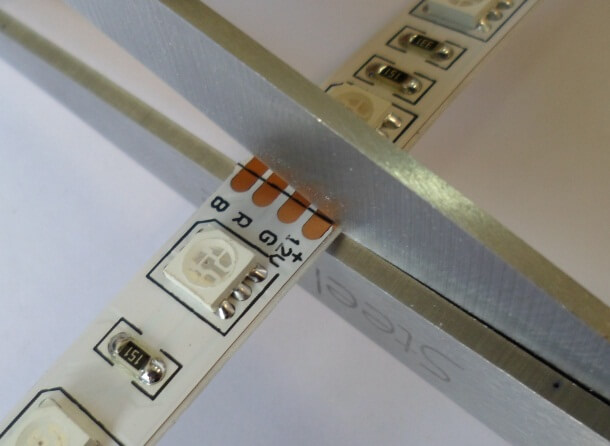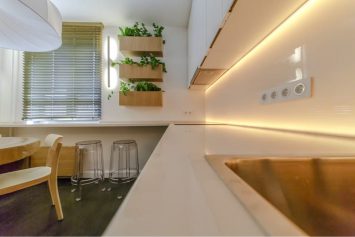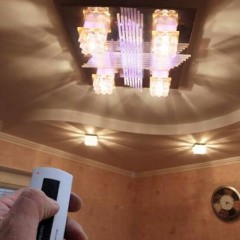How to make an apron in the kitchen?
Overview of Lighting Options
The usual placement of the chandelier in the kitchen in the center is not the most optimal position, since standing at the table, the hostess closes the light and a shadow falls on the production site. The way out of this situation, the installation of a light source above the workplace, under a wall cabinet.
Now that the LED light sources have ceased to be exotic and moved into the category of consumer goods, it is possible to independently install the backlight on the kitchen apron and above the workplace.Lighting Ideas for the Kitchen We have already covered in one of our articles.
In this article, we will not consider incandescent lamps and fluorescent lamps. So to install incandescent or halogen lamps it is necessary to take measures to prevent ignition and eliminate thermal contact, and fluorescent lamps are quite large in size.
LED lights are free from such drawbacks, and with the help of LED strips you can illuminate the most complex interior. In addition, in design solutions, an apron is made of glass, with a printed pattern, which is highlighted using an RGB colored tape or lighting niches above and below the shelves. Such an apron lighting in the kitchen gives a unique charm to the room, disposing to emotional relaxation and mood.
Installation instructions
To install the tape you need to follow the instructions, and you will succeed. The simple rules below will help you independently make the lighting of the apron in the kitchen an LED strip:
- To illuminate the workplace, the color range is best suited to cold or natural light.
- It is better to take the tape for installation in a silicone protective shell, this will facilitate cleaning in the future and thereby increase the service life. If it’s not possible to buy the product in silicone, we recommend that you read our article on how to protect the led strip from moisture.
- Before purchasing a power supply, you need to find out the power of the future backlight, each type of LED has its own power consumption. The table below shows the power consumption of one meter of the lamp.

- The power of the unit must be taken with a margin of 20%, since work at the limit of opportunity will lead to premature failure of the voltage source.
- Cutting pieces of tape must be done in the designated place for this with the image of scissors.

- The power supply must be installed in a place where it will be easy to maintain. At the same time, it must be protected from moisture, debris and overheating.

- The soldering place must be carefully cleaned from silicone and tinned without overheating, while avoiding excessive heating of the substrate and peeling it off from the self-adhesive strip. Also possible purchase special connectors that will allow installation of the tape without soldering.
- Protect areas with exposed wires after soldering using small pieces of heat-shrink tubing of the appropriate diameter.
- To glue the LEDs and make the kitchen apron backlight, the surface must be degreased with alcohol for the best result. Otherwise, it will periodically begin to peel off and sag.

- In the event that it is planned to make the main lighting of the apron from several tapes in a row, and not the backlight in the kitchen, you need to worry about a good heat sink. As a heat sink, you can use aluminum plates, metal housings or retroreflectors from old, old lamps.
These 10 rules will help you make the lighting of a kitchen apron with your own hands. We also recommend watching a video on which 2 installation options are considered: single-color and RGB LED strip.
Photo examples of finished work
Finally, we recommend that you view the photo of the backlight of the apron in the kitchen with an LED strip. Ready-made examples will inspire you to create such an option for lighting yourself:
So you have considered the idea of highlighting a kitchen apron. We hope that with the help of the provided information you can independently make the lighting of the working surface in the kitchen!
Surely you do not know:

















